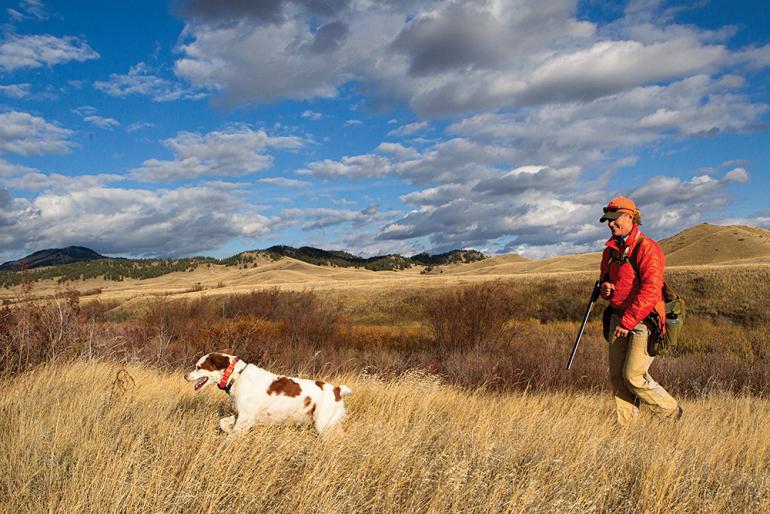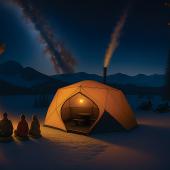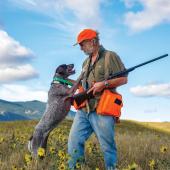Will You Be Our Neighbor?
A discussion with One Montana's Sarah Tilt.
As part two of a four-part series on altruists inspired by the outdoors, Outside Bozeman caught up with One Montana’s Sarah Tilt for a conversation exploring the intersection of conservation and recreation. When not encouraging dialog about rural landscapes, she and her pups can be found hunting the Gallatin Valley’s productive farm fields.
O/B: Describe your role in the conservation community.
ST: I’ve worked in the conservation arena for almost 30 years now, starting mostly as a fundraiser, and I’ve had a chance to work for some great organizations, including Trout Unlimited, the National Fish and Wildlife Foundation, and others. The jobs and the work I’ve chosen has been led by what I’ve been passionate about.
Currently, I’m the executive director for One Montana and we work on a wide variety of issues. One Montana gets a bit beyond conservation and is about preserving cultural and rural values around the state of Montana and promoting resiliency. We have one program called our Common Ground Partnership that focuses on the conservation piece. Within the Common Ground Partnership, the focus has primarily been landowner and sportsman relationships and trying to help rebuild a stronger connection between the two.
O/B: At what point did you decide to pursue a career in conservation?
ST: Shortly after I graduated from college, but as a fine-arts major with a minor in English, it took me a few years to break into the field. I had an opportunity on Earth Day 1990 to work on a major campaign to mobilize people around environmental issues. I found that I had a talent for fundraising and event-planning. In the nonprofit world, those talents are widely sought-after and I was able to take my love of the outdoors and apply it in the conservation world.
O/B: How did outdoor recreation influence your career decision?
ST: I grew up in the outdoors. I grew up with parents who said go outside and I don’t want to see you until dinnertime. I learned to fly fish at the age of six or seven. I was riding horses by the time I was four. This had a big influence and it definitely steered me to wanting to be engaged in conservation.
O/B: What is one of your distinct, early outdoor-recreation memories?
ST: My father and I went fishing together when I was about seven. He put a fly on my rod and he went around to the other side of the lake. I saw him catching fish and I wasn’t catching anything and was getting really frustrated. He came over to say he was finished and heading to the house.
I was pretty determined that I was going to catch a fish, so he gave me the fly that he had on—I still remember that it was a yellow humpy. So, then I started catching fish, but the only thing I knew to do with them was to bang ’em on the head. I put them on a stick and came home very proud.
He was very, very angry and rightly so, I’ve come to learn. My father taught me to clean the fish, and while he was grocery shopping, I sat outside trying to give [the trout] away. I think I gave away two and the rest I had to eat for every meal. I learned that you don’t kill anything you can’t eat, you don’t take things you can’t use. That’s deeply instilled in me.
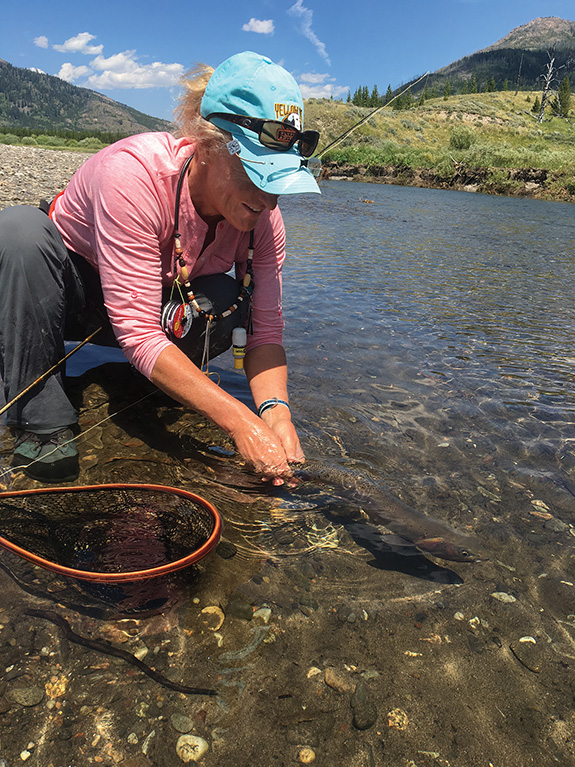
O/B: What is your proudest recreation achievement?
ST: I would say one of my proudest moments was the first dog I trained all on my own. To walk up behind a point and be able to shoot a bird over that dog was probably one of my biggest accomplishments. And when you’re out in the field with your dog and do that over and over again, it’s pretty incredible.
O/B: Where do you see conservation and recreation intersecting?
ST: I think they are interconnected—that one doesn’t trump the other. For us to continue to have quality places to recreate, we have to conserve our open lands and steward them. Conservation, in many ways, makes high-quality recreation possible.
O/B: How do you propose balancing recreation pressure with conservation goals in the Northern Rockies?
ST: We have to look at these issues on a case-by-case basis. I want to have a more highly educated outdoor recreationalist who really understands what conservation does, and that it isn’t free. We all have a role to play in maintaining open spaces.
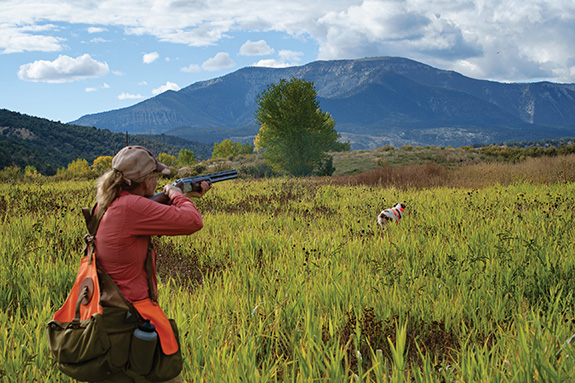
O/B: Where do you see the greatest challenges between conservation and recreation?
ST: There’s a huge challenge as Bozeman grows, and it’s not just Bozeman, it’s all across Montana. We have people coming in from outside with different values; sometimes they bring their values with them. They are not always aware of the cultural values of where they have moved to.
I think it’s [education]. We need to create opportunities for people to understand where you’re moving to and what the values are of the place you’re moving to. I think that’s critical. It’s about helping people to understand what the right thing to do is and to be open to it. I call it neighboring.
O/B: What is your most gratifying conservation accomplishment?
ST: I’ve had a lot of really good successes. Personally, where I am today with One Montana is probably my biggest achievement because I really feel like I can make a difference in a much broader way. Just looking at the last two weeks and all the stuff we’ve done, from hosting the Montana Startup Academy, a program that brings high-school students together to learn about entrepreneurism, to graduating 64 certified Master Hunters. So just seeing the activity that’s happening about where we’re going and we’re really poised to do some cool things across the state. I just think I can continue to keep learning.
O/B: If you could ask one request of the Bozeman’s recreation community in regards to your conservation goals, what would it be?
ST: To try and be a better steward and to help educate other people—newcomers—in what matters to this community and what our values are.


